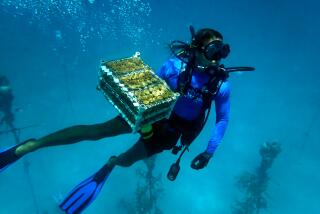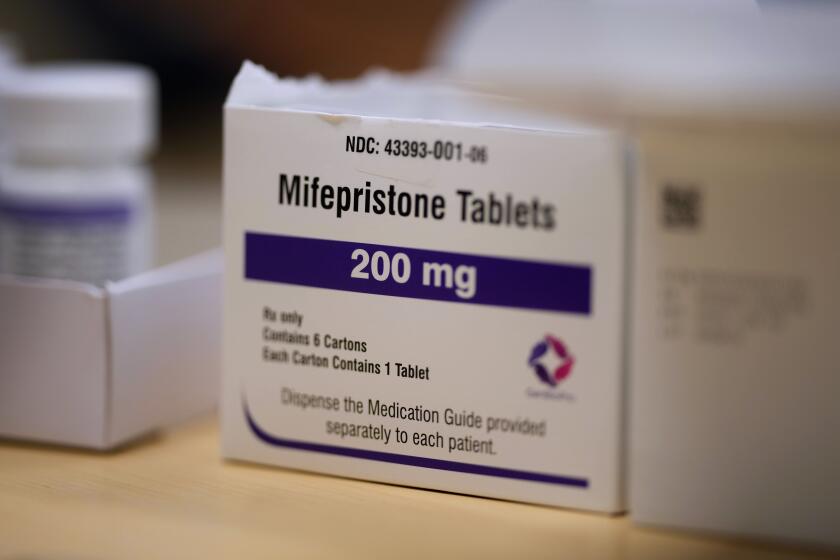Some corals are ‘always prepared’ to take the heat
- Share via
As the tide drops, seawater in Ofu Lagoon gets cut off from the ocean swirling around American Samoa. Under the intense South Pacific sun, these shallow waters can reach 93 degrees -- temperatures that typically would make corals overheated, cause them to bleach bone white and die.
Yet the corals in these hot waters seem to be thriving.
A team of researchers at Stanford University has figured out why: These corals leave a set of 60 genes in the “on” position to help them resist heat shock and then recover and repair.
The findings, published Monday in the Proceedings of the National Academy of Sciences, details how the corals in Ofu Lagoon have front-loaded the expression of these genes so they are always ready with heat shock proteins, antioxidant enzymes and strategies to fight tumors and boost immune systems. Other corals tend to turn on these genes only after they suffer heat stress.
“These corals are like the Boy Scouts with the motto ‘be prepared,’” said Stephen R. Palumbi, leader of the research team and director of Stanford’s Hopkins Marine Station. “They are always prepared by having the genes turned on before the stress.”
Corals, which are tiny colonial animals that form reefs, are found throughout the tropics. They protect islands and coastlines against storms and provide habitat for fish that supplies primary non-vegetable protein for about 1 billion people.
Yet coral reefs are in steep decline. One-third of coral species are threatened with extinction, according to scientific assessments by the International Union for Conservation of Nature. The problems are many: localized threats of overfishing, pollution and disease and global threats of seawater becoming more acidic and getting too hot.
Corals evolved to thrive in clear, tropical waters with an unusual strategy. They house algae inside their protective exoskeletons, which in turn provide them food and oxygen. When seawater gets too hot, these symbiotic algae flee or are expelled, causing the corals to bleach. The algae provide the coral their vibrant color.
Scientists learned years ago that some types of these algae, called zooxanthellae, are especially heat tolerant and can be found in warmest waters in places like the Red Sea.
The new study, co-written by six scientists and led by Stanford postdoctoral researcher Daniel J. Barshis, looked at the animals themselves, and specifically how they use their genome during heat stress.
Using advances in DNA sequencing technology, the team figured out how the 60 genes left in the on position can make coral heat resistant.
The next step in the research, Palumbi said, is to figure out whether corals can acquire this genetic strategy for heat resilience or must be born with it.
Meanwhile, as the world’s oceans continue to heat up with global warming, Palumbi thinks scientists should locate heat-tolerant corals and governments should safeguard them like seed corn. “We might want to protect those corals have a little bit better chance of surviving in the future,” he said.




